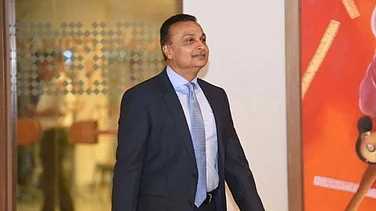The Indian government is reportedly considering coming out with a new scheme to promote the shipbuilding industry of the country, as earlier plans announced in 2015 and 2021 are set to conclude next year. Both plans, one with a corpus of ₹4,000 crore and another with ₹1,624 crore, have seen little utilisation. At the same time, India's share in global shipbuilding remains unchanged as the Chinese order book continues to swell.
Now, the Ministry of Shipping has told the Economic Times (ET) that it is coordinating with the Petroleum, Steel and Fertiliser Ministries to create a demand for 200 ships, totalling 8.6mn gross tonnage, valued at approximately ₹1.3 lakh crore. These vessels will be jointly owned by public sector undertakings (PSUs) and built in Indian shipyards over the coming years.
The report didn't dwell into the details of when and how this scheme would take effect. But it highlights how the government's two earlier schemes to promote building indigenous cargo vessels and pushing India-flagged vessels for global export-import have been dragging.
Scheme 1: Only 8% Utilised
In April 2016, the Centre notified the first Shipbuilding Financial Assistance Policy with the aim of boosting domestic shipbuilding by providing post-delivery financial assistance to Indian shipyards as part of the Make in India initiative. The 10-year scheme, which is set to expire in 2026, offered tapering subsidies applicable to both domestic and export vessel orders. Subsidies started at 20% in 2016–17 and are set to reduce to 11% in the later years. The scheme was modified in 2023 to add a 30% subsidy for green-fuel vessels and 20% for electric or hybrid vessels.
The scheme was one of the key components of the government's Maritime India Vision 2030, which aims to make Indian shipbuilding globally competitive by 2025 and position the country among the world’s top 10 shipbuilding nations. The strategy includes boosting domestic demand by channelising cargo, supporting ancillary industries to enhance productivity and introducing government measures to create a level playing field. The vision sets a target of increasing India’s shipbuilding output to over 500,000 gross tonnage (GT), up from the current 30,000 GT.
However, a Standing Committee report released last year flagged low utilisation and contested the Ministry of Shipping’s claim that the increase in financial assistance availed over the years is sufficient proof of growing shipbuilding activity in India.
“The Committee observes that in the nearly eight years since the launch of the scheme, only a paltry six to seven percent of the ₹4,000 crore corpus has been utilised. The target of ₹200 crore for the next financial year appears to be rather unrealistic considering the poor response of the past few years. Since there are only two years left for the scheme, it appears that the financial benefits under the scheme have not been utilised to the extent possible,” the Standing Committee headed by former Member of Rajya Sabha V Vijaysai Reddy stated.
The February 2024 report said that 31 shipyards have been approved under the Shipbuilding Financial Assistance Policy so far. These shipyards have delivered 99 ships. Under the policy, ₹275.7 crore has been disbursed to shipyards as financial support.
An April 2025 statistical report from the Ministry of Ports, Shipping and Waterways stated that an additional ₹89.93 crore was provided in financial year 2024, taking the total subsidies under the scheme so far to ₹326.92 crore—just 8.71% of the total outlay.

Questions Govt Needs to Answer
At the time, the Standing Committee asked the government to clarify how many of the 31 approved shipyards have actually availed the benefits of the shipbuilding assistance scheme and how many ships each has built. It also sought details on the types of vessels constructed and whether private shipyards—such as the successful government-run Cochin Shipyard—have secured global orders, especially for large container ships. While noting that top shipbuilding nations like China, South Korea and Japan thrive on exports, the Committee urged the government to assess why the scheme’s utilisation remains low. It suggested examining whether factors such as heavy reliance on imported materials and low levels of automation are reducing the competitiveness of Indian shipyards.
Government data shows that while the number of ships built and delivered rose from 280 in 2020–21 to 433 in 2022–23, it slightly declined to 410 in 2023–24, indicating that despite growth in output and earnings, fresh orders have not witnessed consistent upward momentum.
In conclusion, the Standing Committee reiterated that the 2001 Rangarajan Commission had recommended classifying ships and other vessels as infrastructure. Currently, only shipyards have been granted infrastructure status, which allows access to long-term funding at lower interest rates. The committee recommended that this status be extended to all ships and vessels. It also advised incentivising domestic production of specialised steels and establishing a Maritime Development Fund to improve access to working capital and long-term finance.
According to a Federation of Indian Chambers of Commerce and Industry (FICCI) report, Indian shipyards require about 25–35% of a ship’s cost as working capital during construction, with interest rates averaging 10–10.5%. In contrast, overseas shipbuilding yards enjoy significantly lower rates along with concessional export credit. Both these concerns were flagged in the ET report, which cited sector experts as saying that high costs of debt funding, shorter loan tenures and taxation on the wages of Indian seafarers employed on Indian vessels are some of the industry’s main pain points.
Scheme 2: Lack of Flagged Vessels
In 2021, a separate scheme was launched by the government. This time it was for the promotion of flagging of merchant ships, with a budget of ₹1,624 crore to be disbursed over five years. Its goal is to increase the number of Indian-flagged vessels, especially in government cargo tenders, by offering financial subsidies to offset higher operational costs compared to foreign ships.
The scheme provides subsidies ranging from 5% to 15%, depending on the age and flagging date of the ship and supports Indian shipping companies in competing with global players. It also offers a right of first refusal to Indian-flagged vessels in specific tenders, aiming to boost national tonnage and reduce foreign exchange outflow.
The government at the time argued that India’s shipping sector holds just 1.2% of the global fleet capacity and the share of Indian ships in carrying the country's export-import (EXIM) trade has fallen sharply from 40.7% in 1987–88 to just 7.8% in 2018–19. This decline has resulted in a significant foreign exchange outflow, with freight payments to foreign shipping lines reaching around $53bn in 2018–19 and about $637bn over 13 years. Indian-flagged ships face much higher operating costs—about 20% more than foreign ships—due to factors such as higher interest rates, shorter loan tenures, taxation on seafarers' wages, integrated goods and services tax (IGST) on ship imports and blocked GST credits.
Unlike foreign vessels, Indian ships must also follow domestic tax and regulatory laws, making them less competitive. Although the government promotes imports on a free on board (FOB) basis, in practice many imports—including coal, fertilisers and around 35% of crude oil—occur on a cost, insurance and freight (CIF) basis. This limits the role of Indian shipping companies in transporting domestic cargo, the policy background noted.
But did the scheme change the situation in the last four years of operations? Again, the problem seems to be fund utilisation. The Economic Times report citing ministry officials says that so far only around ₹330 crore has been disbursed and the share of Indian-flagged ships remains in single digits.

Where India Stands
British research firm Clarksons Research says India is currently the 19th largest ship-owning nation, holding about 1.5% of the world fleet, led by companies like SCI, Great Eastern, Chellaram and Seven Islands. It ranks 22nd as a flag state with just 0.7% of the global total. As of 2024, India ranks 13th globally in shipbuilding orders, with just 0.3% of the market, led by Cochin Shipyard. The firm's report from February says that the global market is highly competitive, dominated by China with 58% of the order book but India sees potential in building smaller vessels, especially with a focus on fleet renewal and green technology.
"India has for many decades been a prominent recycling destination, with facilities handling a third of tonnage recycled 2004–24. In 2024, India ranked second for volumes (about 30% share) but Indian recyclers also seem to be leading Bangladesh and Pakistan in preparing facilities for compliance with the HK Convention green treaty (a global treaty that aims to ensure environmentally sound and safe recycling of ships, protecting both workers and ecosystems, in force from June 2025)," Clarksons says, adding that the nation has lots of growth opportunity but also plenty of challenges ahead if it is to unlock its wider maritime potential.

Revamped SBFAP
In the interim Budget 2025, Finance Minister Nirmala Sitharaman announced a revamped Shipbuilding Financial Assistance Policy (SBFAP 2.0), with a ₹18,090 crore outlay. An additional ₹25,000 crore was allocated under the Maritime Development Fund in the February budget this year.
The revamped scheme offers fixed subsidies of 20% for standard vessels, 25% for specialised ships and 30% for green or technologically advanced vessels. It also includes credit incentives for ship recycling, infrastructure support for mega shipyard clusters, R&D funding and tax reforms to boost competitiveness. The policy aims to make India one of the world’s top five shipbuilding nations by 2047, raising the goalpost from the earlier scheme.
One of the key features of SBFAP 2.0 is the Shipbreaking Credit Note Scheme, which promotes sustainable ship recycling in India. Under this scheme, up to 40% of a ship’s scrap value can be given as a credit note to shipyards, which can then be used to purchase new ships built in India, creating a circular and eco-friendly system.
The policy also plans to develop new shipbuilding clusters with a capacity of 1.0 to 1.2mn gross tonnage each. These clusters will receive direct capital support for infrastructure upgrades like breakwaters and dredging along with a 10-year rent holiday on land, making them more financially viable to set up and operate.
But will SBFAP 2.0 beat earlier schemes in utilisation? That is something we will have to wait and see.
































